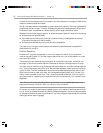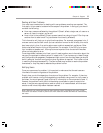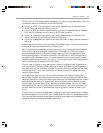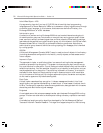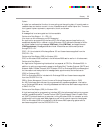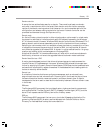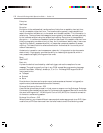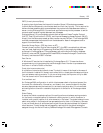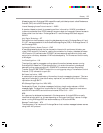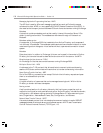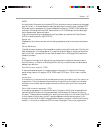
Microsoft Exchange 2000 Operations Guide — Version 1.0100
Conferencing Management Service – CMS
The network service that coordinates the booking of virtual resources for online meetings in
the Exchange Conference Service. Each site (not domain) normally has an active
Conferencing Management Service to allow fast connection for data conferencing users.
Conference Technology Provider – CTP
A provider of data conferencing services such as real-time video, audio, and telephony
integration.
Configuration Connection Agreement – ConfigCA
A special Connection Agreement implemented as part of the Active Directory Connector
that replicates configuration naming context data from downlevel Exchange 5.x sites to
administration groups in Active Directory and vice versa. ConfigCAs work in conjunction
with the Site Replication Service.
Connection Agreement – CA
The configuration of information to be replicated using the Active Directory Connector.
This configuration information includes the servers that participate in the replication,
which object classes (mailbox, custom recipient, distribution list user, contact, and group)
to replicate, containers and organizational units to use for object placement, and the
activity time schedule.
Contact
A non-security principal that represents a user outside of the organization. A contact will
generally have an e-mail address, facilitating messaging between the local organization and
the remote object. A contact is similar to a custom recipient in Exchange Server 5.5.
Data Encipherment Standard – (DES/Triple DES)
An IBM symmetric encryption block cipher that uses a fixed 56-bit key. It was defined
and endorsed by the U.S. government in 1977 as an official standard and is regarded as the
most widely used cryptosystem in the world. A process of enciphering plain text three times
with DES and three different potential series of actions. DES-EEE3 (Three DES encrypts
with three different keys), DES-EDE3 (three DES operations in the sequence encipher-
decipher-encipher with three different keys), or DES-EEE2 and DES-EDE2 (same as the
previous formats except that the first and third operations use the same key).
Distributed Authoring and Versioning – DAV (also known as HTTP-DAV and Web-DAV)
An extension to the Hypertext Transfer Protocol 1.1 (HTTP/1.1) that allows for the
manipulation (reading and writing) of objects and attributes on a Web server. Exchange
2000 natively supports WebDAV. Although not specifically designed for the purpose, DAV
allows for the control of data using a filing system-like protocol. DAV commands include
Lock, Unlock, Propfind and Proppatch.



